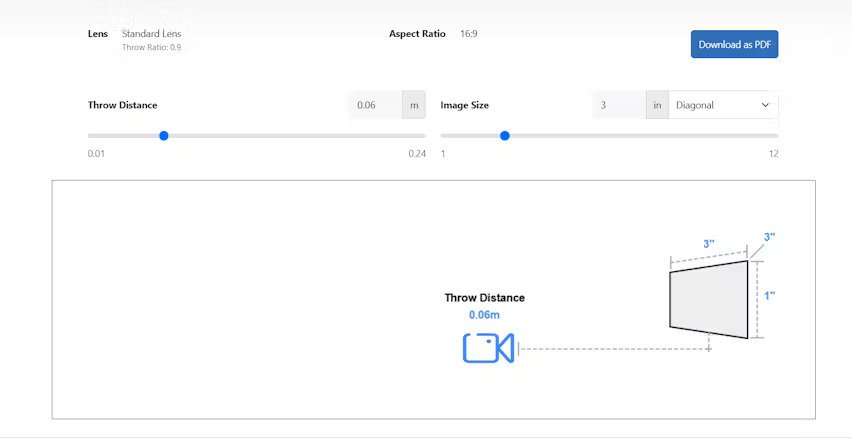In today’s fast-paced global economy, efficient freight management is essential for businesses looking to optimize logistics, reduce costs, and improve delivery speed. Whether managing domestic shipments or international supply chains, effective freight management ensures that goods are transported efficiently, securely, and cost-effectively.
This guide will cover everything you need to know about mastering freight management, including its importance, key challenges, strategies for cost reduction, and how to enhance logistics speed without compromising efficiency. If you want to develop Freight management software, just get in touch with the Logistics software development company.
1. Understanding Freight Management
Freight management refers to the process of overseeing and coordinating the transportation of goods from one location to another. It involves various logistics functions, including carrier selection, route optimization, inventory control, shipment tracking, and regulatory compliance.
1.1 The Importance of Freight Management
Efficient freight management is crucial for businesses because it:
- Reduces transportation costs
- Improves supply chain efficiency
- Enhances customer satisfaction through timely deliveries
- Minimizes risks of delays and damages
- Ensures compliance with shipping regulations and customs requirements
1.2 Types of Freight Transportation
Freight is typically transported through the following modes:
- Road Freight – Ideal for short and mid-range deliveries, road freight offers flexibility and accessibility.
- Rail Freight – A cost-effective solution for bulk shipments over long distances.
- Air Freight – The fastest shipping mode, best suited for high-value or time-sensitive goods.
- Sea Freight – A cost-efficient method for international shipping, commonly used for large shipments.
- Intermodal Freight – A combination of multiple transport modes for optimized logistics.
2. Key Challenges in Freight Management
1. Rising Transportation Costs
One of the most significant challenges in freight management is the continuous rise in transportation costs. Factors such as fuel price fluctuations, increased labor wages, vehicle maintenance, and toll fees contribute to higher shipping expenses. Additionally, supply chain disruptions, inflation, and changing trade regulations can further impact costs. Businesses must implement cost-cutting strategies, such as load optimization, better route planning, and negotiations with multiple carriers to minimize financial strain.
2. Supply Chain Disruptions
Freight management is highly vulnerable to supply chain disruptions caused by natural disasters, pandemics, geopolitical conflicts, or port congestion. These disruptions can lead to shipment delays, product shortages, and increased costs. Businesses must develop contingency plans, establish multiple supplier networks, and utilize real-time tracking technology to mitigate risks. Proactive planning and flexible logistics strategies are essential to maintain a steady supply chain flow and meet customer demands.
3. Compliance & Regulatory Challenges
Managing freight operations requires strict adherence to local, national, and international trade regulations. Businesses must navigate complex customs requirements, tariffs, and shipping documentation to avoid penalties or shipment delays. Compliance laws frequently change, requiring logistics companies to stay updated on new policies. Implementing automated compliance management systems, hiring regulatory experts, and ensuring proper documentation can help businesses streamline freight operations while avoiding costly legal issues.
4. Inefficient Route Planning
Poor route optimization leads to longer delivery times, higher fuel consumption, and increased operational costs. Without proper planning, drivers may encounter traffic congestion, road restrictions, or inefficient delivery sequences. Leveraging advanced technologies like GPS tracking, AI-driven route optimization, and transportation management systems (TMS) can improve efficiency. By using predictive analytics, businesses can determine the best routes, reduce transit times, and enhance overall freight movement.
5. Inventory Mismanagement
Inaccurate inventory forecasting and poor stock management lead to delays in order fulfillment and lost revenue. Overstocking increases storage costs, while understocking results in shipment shortages and dissatisfied customers. Implementing smart inventory management solutions, such as demand forecasting tools and automated warehouse systems, helps businesses maintain the right stock levels. Real-time inventory tracking also ensures that shipments are scheduled efficiently, reducing delays and optimizing freight logistics.
3. Strategies to Reduce Freight Costs
Optimizing logistics for cost efficiency requires a strategic approach. Here are some key strategies:
3.1 Consolidation of Shipments
Businesses can reduce costs by consolidating smaller shipments into larger loads, reducing the number of trips required.
3.2 Negotiating with Freight Carriers
Long-term partnerships with carriers can help negotiate better rates and service agreements. Comparing multiple providers ensures cost-effective solutions.
3.3 Implementing Freight Auditing
Regular freight audits help identify billing errors, overcharges, and inefficiencies, leading to cost savings.
3.4 Choosing the Right Freight Mode
Selecting the most cost-effective mode of transport based on urgency, distance, and shipment size can significantly reduce expenses.
3.5 Investing in Technology
Freight management software helps businesses track shipments, optimize routes, and analyze cost-saving opportunities.
4. Enhancing Logistics Speed for Better Efficiency
Speed is a critical factor in logistics, impacting customer satisfaction and business competitiveness. Below are effective ways to enhance logistics speed:
1. Route Optimization for Faster Deliveries
Optimizing delivery routes is crucial for enhancing logistics speed. Advanced GPS systems and AI-driven route planning help identify the shortest and most efficient paths, reducing travel time and fuel consumption. Businesses can avoid congested areas, road closures, and unexpected delays by using real-time traffic data. Implementing route optimization software ensures deliveries are completed promptly, improving overall efficiency and customer satisfaction while cutting down on operational costs.
2. Real-Time Tracking & Communication
Implementing real-time tracking systems improves logistics efficiency by providing up-to-the-minute updates on shipments. GPS-enabled tracking allows businesses and customers to monitor delivery progress, reducing uncertainty and enhancing transparency. Automated notifications inform stakeholders about delays, helping them make quick adjustments. Effective communication between drivers, warehouses, and customers minimizes misunderstandings, reduces idle time, and ensures that shipments reach their destination faster while maintaining accuracy and security in the supply chain.
3. Warehouse Automation for Speedier Processing
Warehouse automation significantly boosts logistics speed by streamlining inventory management, order fulfillment, and dispatching. Automated systems, including conveyor belts, robotic picking, and AI-driven sorting, reduce manual handling errors and processing time. RFID and barcode scanning enable quick identification and movement of goods. By minimizing human intervention and utilizing smart storage solutions, businesses can enhance order accuracy, reduce delays, and meet growing customer demands with faster turnaround times.
4. Enhancing Last-Mile Delivery Efficiency
Last-mile delivery is often the most time-consuming and costly part of logistics. Businesses can improve efficiency by using local distribution hubs, smart lockers, and delivery drones. Route planning software helps drivers avoid unnecessary detours, while gig economy couriers expand delivery capabilities. Additionally, crowd-sourced delivery models and autonomous vehicles are being integrated into logistics networks to speed up final-mile fulfillment, ensuring customers receive their orders quickly and reliably.
5. Employee Training & Performance Optimization
Well-trained employees play a crucial role in speeding up logistics operations. Providing regular training on efficient packing, handling, and transportation techniques helps workers execute tasks more quickly. Training on software tools, inventory management, and real-time communication systems ensures staff can adapt to challenges efficiently. Encouraging a culture of continuous improvement and performance tracking allows businesses to identify bottlenecks and implement corrective measures, leading to faster and more reliable logistics operations.
5. Leveraging Technology in Freight Management
Technology plays a vital role in optimizing freight management for cost and speed. Key technologies include:
5.1 Transportation Management Systems (TMS)
TMS software streamlines route planning, carrier selection, and freight tracking, improving overall efficiency.
5.2 Artificial Intelligence (AI) & Machine Learning
AI-driven analytics help predict demand, optimize inventory, and improve route efficiency.
5.3 Internet of Things (IoT) & Telematics
IoT-enabled sensors track shipments, monitor vehicle conditions, and provide real-time data to enhance decision-making.
5.4 Blockchain for Freight Security
Blockchain technology enhances supply chain transparency, prevents fraud, and ensures secure documentation.
5.5 Warehouse Automation & Robotics
Automated warehouses use robotics for sorting, packing, and inventory management, reducing human errors and processing time.
6. Sustainable Freight Management: A Growing Priority
Sustainability in logistics is gaining importance due to environmental concerns and regulatory requirements. Businesses can adopt the following sustainable practices:
6.1 Eco-Friendly Transportation
Using electric vehicles, hybrid trucks, and biofuel-powered fleets reduces carbon emissions.
6.2 Route Optimization for Fuel Efficiency
Minimizing unnecessary mileage through AI-driven route optimization decreases fuel consumption.
6.3 Sustainable Packaging
Using recyclable and biodegradable packaging materials contributes to sustainability efforts.
6.4 Green Warehousing
Implementing solar energy, LED lighting, and smart climate control in warehouses enhances energy efficiency.
7. Future Trends in Freight Management
The logistics industry is evolving rapidly, and businesses must stay ahead of emerging trends:
7.1 Autonomous Freight Vehicles
Self-driving trucks and drones are expected to revolutionize freight transportation by reducing human dependency and improving efficiency.
7.2 Predictive Analytics for Demand Forecasting
Advanced analytics will help businesses anticipate demand fluctuations and adjust logistics strategies accordingly.
7.3 Hyperloop & High-Speed Freight Transport
Innovations like Elon Musk’s Hyperloop could drastically reduce transit times for freight shipments.
7.4 Augmented Reality (AR) in Logistics
AR technology is being used for warehouse management, helping workers locate, pick, and pack items faster.
7.5 Supply Chain Resilience Strategies
Post-pandemic, businesses are prioritizing diversification of suppliers and flexible logistics networks to mitigate future disruptions.
Conclusion
Mastering freight management requires a balance between cost optimization and speed enhancement. Businesses must adopt strategic shipping methods, leverage technology, and implement sustainable logistics practices to stay competitive in the modern market.
By understanding the key challenges, implementing cost-saving measures, utilizing advanced freight technologies, and adapting to future trends, businesses can achieve a streamlined, efficient, and profitable logistics operation.
Optimizing freight management is not just about cutting costs—it’s about creating a supply chain that is reliable, fast, and future-ready.














Leave a Reply